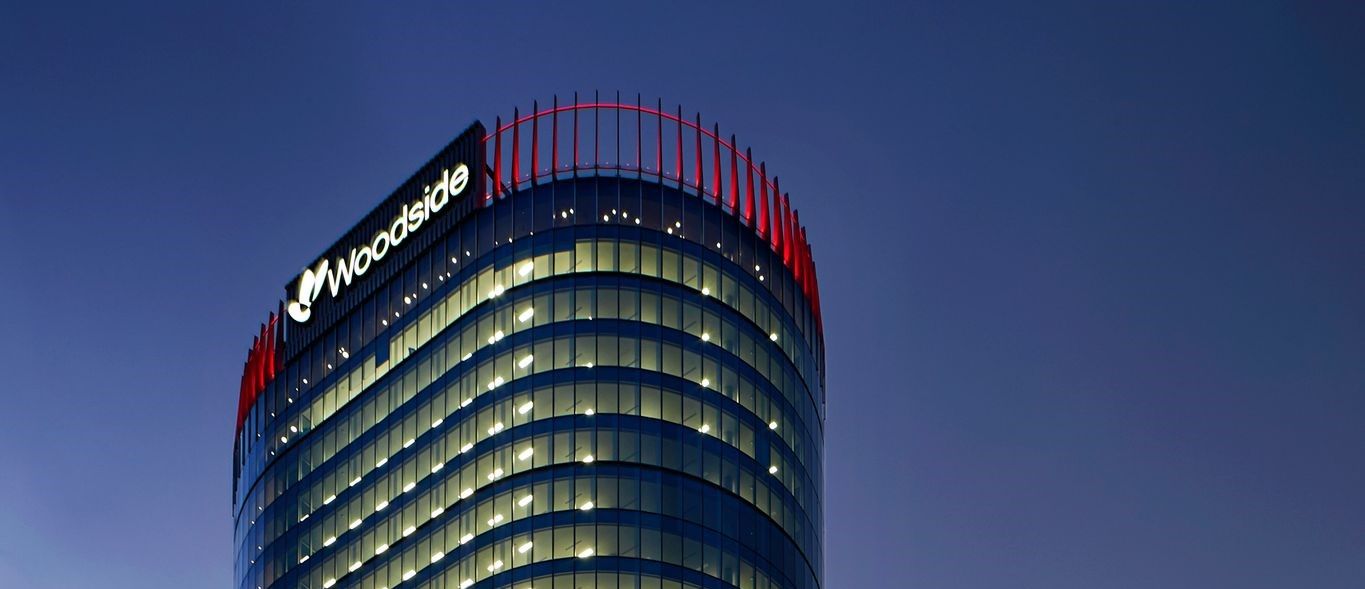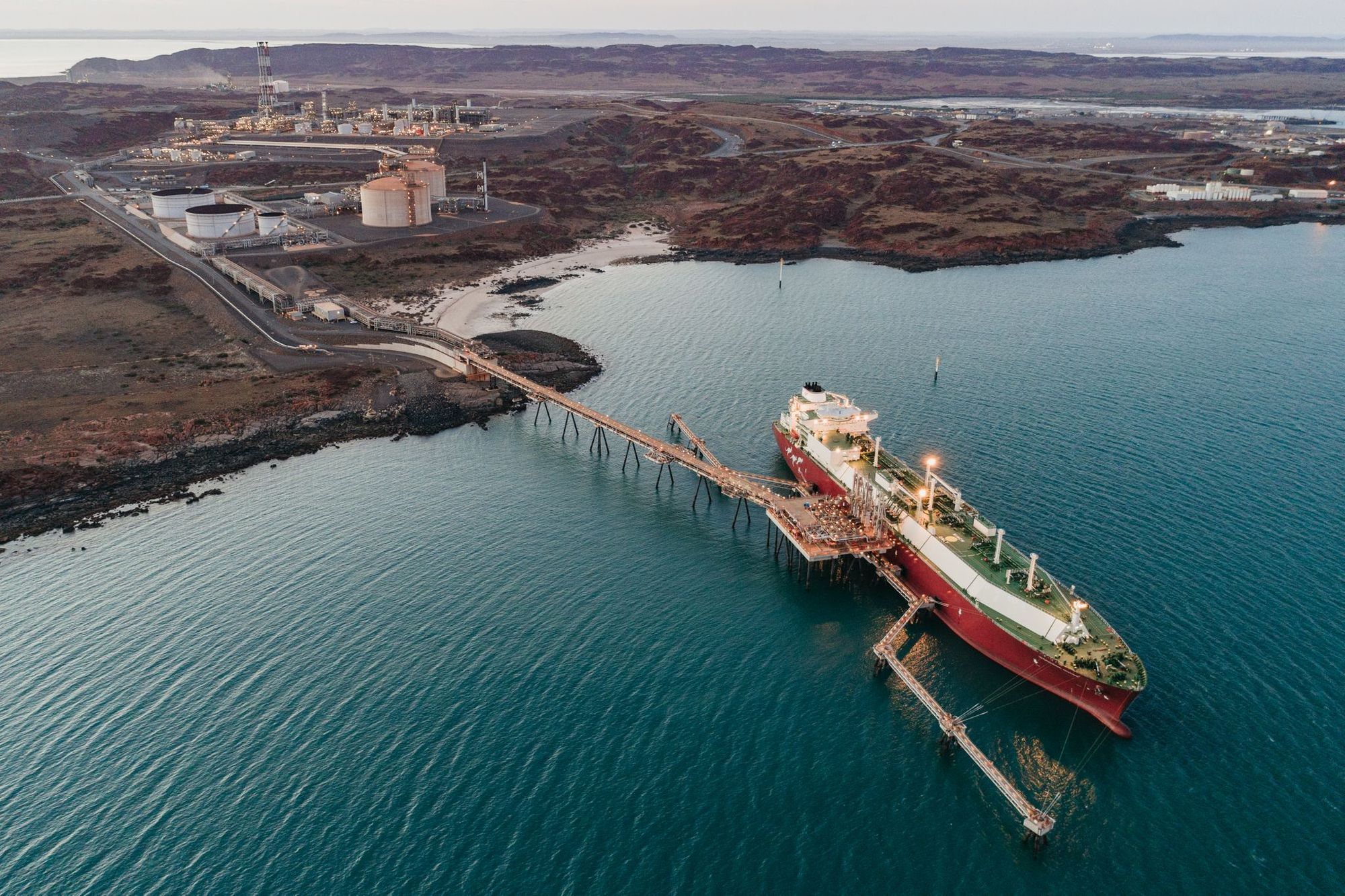🗡️ Who murdered the Murujuga rock art science?
Special Cluedo™️ edition 🔍 Was it Mr Cook or Prof Smith?
Chevron's slice of the North West Shelf LNG project is touted as ideal for infrastructure investors. It is the opposite - highly risky, complex and dysfunctional.

ANALYSIS
Chevron's eight-point sales pitch for its share of North West Shelf LNG has leaked and, like a real estate ad, has missed some key points.
Bankers UBS sent a detailed flyer to oil and gas companies, overseas sovereign wealth funds, and local superannuation and investment funds, according to a copy obtained by the Financial Review.
Apparently, Chevron is selling a 17 per cent stake in a "world-class" project with a "proven" joint venture that has made "significant progress" towards becoming a facility for processing other companies' gas.
However, there are at least eight points UBS missed that potential buyers should mull before putting down several billion dollars.
1. A renovators' delight
The NWS domestic gas plant is 36 years old, and its first LNG train is 31 years old. The plant needs a life-extending refurbishment for any new buyer to get a return on investment. That could cost up to $US12 billion, according to oil and gas consultancy Wood Mackenzie.
It is worth noting what Woodside chief executive Peter Coleman said in June:
"Once you get into an old plant, you start to find things that you didn't see before," Coleman told a Credit Suisse webinar.
"It's like doing renovations on your house.
"How many of those on the line today actually got a renovation on budget?"
2. An excellent CO2 machine
The three oldest LNG trains that produce almost half the NWS plant's LNG emit 0.40 tonnes of greenhouse gases for each tonne of LNG, excluding CO2 in the reservoir gas and emission from offshore facilities.
Their climate impact is 54% greater than the carbon intensity of the more modern Trains 4 and 5, according to a Woodside environmental submission.
Half the NWS LNG capacity was designed before climate change was an issue. The world is now transitioning through fossil fuels, with the dirtiest fuels dumped first. Coal has been hit hard, and the most polluting gas is next. Expect to see NWS LNG marked down in the market in the future.
Coleman has said that tolling agreements could place the cost of any future carbon price onto the owners of the gas processed at the NWS, but that would result in lower tolls.
Passing through the costs does not absolve the plant owners of other responsibilities.
Any potential plant owner will need to consider how the high emissions affect its own carbon targets and those of its potential investors.
3. Air pollution for a possible social license disaster
Rio Tinto has taken a big knock for blowing up the Juukan caves that, despite their importance, few had heard of before their destruction.
Imagine being responsible for ongoing damage to a high-profile World Heritage-listed collection of more than one million rock art images?
That is the risk any buyer of the NWS plant needs to consider due to concerns that oxides of nitrogen, or NOx, from industry on the Burrup are affecting the Murujuga rock art.
The artwork is scratched into a very thin varnish-like layer on the rocks of the Burrup Peninsula. If air pollution damages that layer then images that have lasted 40,000 years could disappear.
The NWS emitted 6900 tonnes of NOx in the 12 months to June 2019. Coleman told Woodside's AGM in May that the North West Shelf's "1970's vintage power generation" produced 60 per cent of the total NOx from all industry on the Burrup Peninsula.
"There is no material detrimental effect to the petroglyphs (rock art) at this point due…however we do recognise the potential," Coleman told his shareholders.
Note the qualifiers "material," "at this point" and "potential."
Further scientific work started this year to investigate if air pollution is damaging the rock art. Boiling Cold understands useful results will not be available until 2023 at the earliest.
This week the Murujuga rock art achieved tentative World Heritage listing, the first step in the nomination process.
Any investor in the NWS has the prospect that in three years the science shows the NWS is damaging the rock art, and that rock art is World Heritage-listed.
Good luck to potential buyers factoring that risk into their spreadsheets.
Woodside has considered building a new power plant for the NWS about 25km away on the Maitland Estate. However, it was not included in environmental approvals for NWS life extension lodged in late 2019.
4. Where is the gas to process?
Woodside's planned to fill the NWS plant with gas from Browse as production from the NWS's own fields dwindles over this decade. That will not be happening. In short, Browse is dirty, expensive, risky and its partners, unlike Woodside, have better options to invest in.

Very preliminary agreements have been made for Pluto and Waitsia to process gas through the NWS, but these are relatively small volumes for a few years.
The only likely source of significant gas through the NWS is the Scarborough field, 75% owned by Woodside, with BHP holding the remaining equity.
Woodside's base case for Scarborough's gas is a new LNG train at Pluto. Having an option gives negotiation leverage to get a better deal with the NWS.
To be approved, Scarborough either needs an excellent deal with NWS or a more economic Pluto development.

Any investment in the NWS before Scarborough is sanctioned and committed to the NWS is a bet that could yield nothing more than an old rapidly emptying LNG plant.
5. Good luck agreeing on processing terms
Agreeing on terms to process multiple streams of gas through an ageing LNG plant is a commercial nightmare.
Which gas has priority when there is an unplanned shutdown?
Who pays for the enormous but unpredictable ongoing maintenance bill?
What happens when unplanned major work worth many hundreds of millions of dollars is required? Will it be an expensive quick fix to maximise production or a more considered approach to minimise costs?
Who takes responsibility for reliability? The plant owner will be trying to minimise operating costs while the gas owner wants production prioritised.
Remember, the NWS joint venture has trouble agreeing when the gas and plant have the same ownership.
In a tolling arrangement, the sources of disagreement multiply enormously.
6. Come join a dysfunctional family
Partner dynamics within the NWS have long been an industry joke.
A Chevron exit removes the friction of the US major trying to get its gas processed ahead of Woodside's. However, it also signals that the largest owner of gas reserves in the Carnarvon Basin plans to send its gas elsewhere.
Woodside will push for the best deal for Scarborough, not the NWS.
BHP will do the same, in a half-hearted way, as an exit is its real strategy.
Keen-to-be-green BP would rather exit the NWS except for one thing: it is drilling the Ironbark gas play later this year that is conveniently near existing NWS offshore facilities.
If Ironbark looks promising, BP will focus on getting that gas through the NWS, and that may conflict with Woodside's plans.
Shell has more than enough Australian LNG with Gorgon, Prelude and QCLNG. Expect an exit to free up cash and reduce its corporate emissions.
Japan Australia LNG, the joint Mitsui and Mitsubishi company, may not be interested in a pure infrastructure play. Mitsui, however, is happy in the short term as its gas from Waitsia gets processed.
And NWS does not have six partners; it has seven. China's CNOOC has a 50% stake in some of the offshore fields and, Boiling Cold understands, a similar veto to the other partners over major changes to the project.
Good luck spotting a common purpose among this group.
With many exits planned, the dynamics could improve.
The Catch 22 is that the full picture will only be knowns when the last deal is done, which makes the first deal crazily risky.
When every partner has a veto near enough is not good enough.
7. The cleanup bill will hit when cashflow is lean
Woodside estimated it will cost up to $160 million to decommission the Echo Yodel step out development of a few wells and 23 km of pipeline and umbilical.
Echo Yodel is a tiny fraction of North West Shelf's offshore infrastructure.
The cost of decommissioning the entire onshore and offshore NWS infrastructure is massive and may be required within a decade if no significant gas sources are signed up.
The lean cashflow of the last few years of declining NWS production will not finance this effort, and the partners will need to inject cash.
The upside of any NWS investment case has to be enormous to warrant the risk of this downside.
8. And you lose either way
Any buyer that successfully strikes a deal with Chevron faces a winner's curse.
If Woodside thinks the price is good and Scarborough gas is likely to go the NWS it will pre-empt the deal and take Chevron's stake itself. Months of effort and millions of dollars on advisors wasted.
And if Woodside lets the purchase go ahead? You have just paid too much for 17% of an ageing and emptying LNG plant.
Congratulations.
Main image: North West Shelf gas plant near Karratha. Source: Woodside Energy Ltd
All the info and a bit of comment on WA energy and climate every Friday